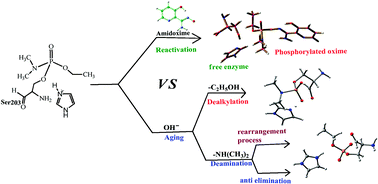In silico study on aging and reactivation processes of tabun conjugated AChE†
Abstract
We have examined the aging and reactivation mechanisms of the tabun-conjugated AChE using MP2/6-31 + G*//M05-2X/6-31G* level of theory. The activation barriers have been calculated for the aging process considering both


 Please wait while we load your content...
Please wait while we load your content...